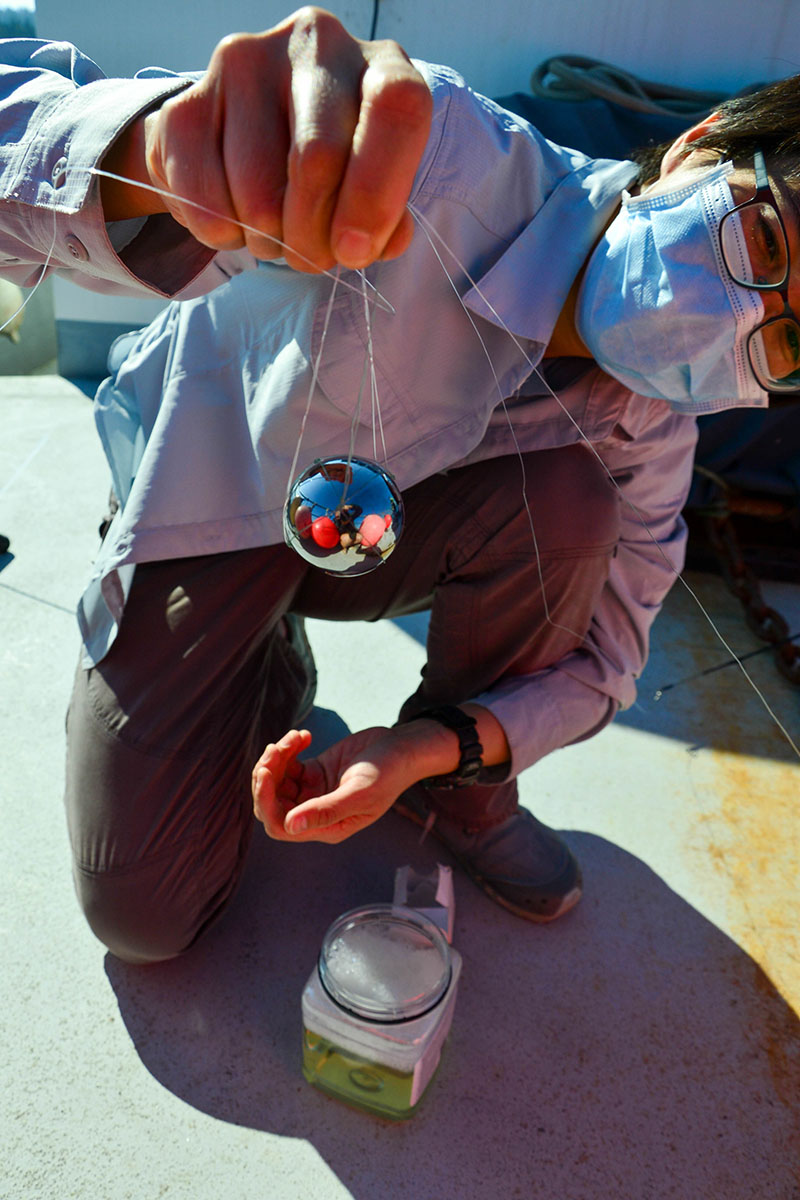

Echosounders are a powerful tool to study the water column using sound. To accomplish this task, transducers are mounted to the bottom of research vessels that send out pings of specific frequencies and then listen for the echoes that return when the sound encounters objects in the water column. If the sound encounters something in the water column that has a different density than the water around it, sound will be scattered back to the transducer, providing information about what objects are down there. To ensure that the resulting data are accurate, scientists must calibrate the transducer using calibration spheres (shown here by Coordinated Simultaneous Physical-Biological Sampling Using ADCP-Equipped Ocean Gliders expedition principal investigator Wu-Jung Lee) of known density. This calibration process can be arduous as researchers try to find this small sphere underneath the boat using the transducer — it has been compared to finding a needle in a haystack!